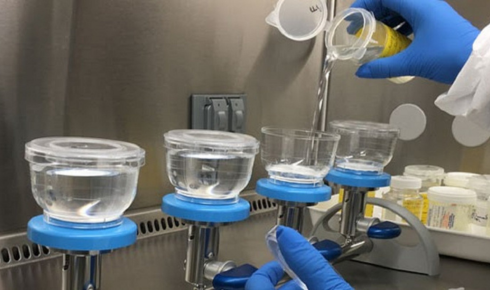It’s funny how often we take water for granted. You turn on the tap, fill up a glass, and assume what you’re drinking is safe. But behind that simple action lies a huge responsibility—keeping our water clean, tested, and treated so it doesn’t harm us or the environment. And honestly, in today’s world where pollution, aging infrastructure, and climate pressures are piling up, that responsibility feels heavier than ever.
The Invisible Work That Keeps Water Safe
What most people don’t realize is how much effort goes into making sure water doesn’t just look clean but is clean. It’s not just about filtering out leaves or dirt—modern systems have to deal with bacteria, chemicals, heavy metals, and even microplastics sneaking their way in. That’s where Water treatment services step in. They’re not some luxury add-on; they’re the backbone of safe communities. Whether it’s municipal plants handling millions of gallons or smaller local solutions for factories and housing societies, treatment processes ensure water won’t slowly poison the very people it’s meant to nourish.
Why Testing Isn’t Optional
Here’s the tricky part: clean-looking water isn’t always safe. You could be sipping on a crystal-clear glass that’s loaded with harmful bacteria or nitrates. That’s why regular checks are so crucial. A Water testing service can reveal hidden issues long before they turn into health disasters. Think of it like a medical check-up but for your drinking supply. Sometimes the results confirm that everything’s fine, and sometimes they’re a wake-up call you didn’t know you needed. Skipping testing is basically like driving with your eyes closed—sure, you might be fine for a while, but eventually, reality catches up.
The Role of Local Solutions
It’s not always giant corporations or city councils handling this work either. Smaller players are making a huge difference, especially in regions where large infrastructure is either outdated or missing. Take Aclear water solutions for instance. Companies like this often bring technology and practicality together, helping households, farms, and industries manage water quality without drowning in complexity. They’re proof that you don’t need to be a global powerhouse to make a real impact—sometimes nimbleness and attention to detail matter more than scale.
The Ripple Effect of Safe Water
Good water isn’t just about avoiding sickness. It ripples out into almost every part of life. Kids miss fewer school days. Farmers grow healthier crops without worrying about contaminated irrigation. Families spend less on hospital bills. Businesses avoid lawsuits or shutdowns. And the environment? It breathes easier when toxins don’t leak back into rivers and soil. There’s this simple truth: water is at the center of everything, so when you protect it, you’re really protecting the entire chain of life connected to it.
The Human Side of Clean Water
Beyond the technical jargon and infrastructure, there’s also something deeply human about this whole thing. Clean water gives peace of mind. It lets parents hand a glass to their child without a second thought. It means an elderly couple can trust their tap instead of boiling every drop. It gives neighborhoods a sense of security in times when so much else feels unpredictable. That sense of ease—knowing something as basic as water is taken care of—can’t be measured in dollars or reports.
Challenges That Still Need Tackling
Of course, it’s not all smooth sailing. Infrastructure in many parts of the world is decades old and cracking under pressure. New contaminants, like PFAS “forever chemicals,” are proving harder to deal with than expected. Then there’s the cost—because let’s face it, proper testing and treatment don’t come cheap. Still, these challenges shouldn’t push us toward shortcuts. If anything, they should push innovation forward. From AI-driven monitoring systems to sustainable filtration materials, the solutions are out there; it’s just about making them accessible.
A Future Built on Awareness
At the end of the day, the first step is awareness. When people understand the importance of testing and treatment, they start asking the right questions. They push their communities, governments, and service providers to do better. And as demand grows, so does accountability. It might feel like a slow process, but awareness spreads—just like ripples in a pond.
Wrapping It All Up
Water is one of those things that should never be a gamble. Every sip we take is a quiet trust fall, and it’s only fair that the systems behind it hold strong. Whether it’s a large-scale municipal operation, a dedicated local provider, or an individual making sure their household supply is tested, every effort adds up. If there’s one takeaway, it’s this: don’t assume, don’t postpone. Safe water doesn’t happen by accident—it’s the result of constant care, science, and yes, a bit of responsibility from all of us.

